Background - US tank development 1920-1930
The first U.S. tank (M1919) was mass-produced on the basis of the French Renault FT. A near-postwar design, the US-British Tank Mark VIII Liberty was the first heavy tank in US service. Over 100 were built. Then, following a 1920 specification for an US army tank, Ford and several other companies proposed prototypes but, without any urgency, all these projects never reached the production line. The M1924 designed by Cunningham was not satisfactory either.One engineer, William Christie, was proficient in designing a revolutionary cavalry tank, soon called "the Race tank". The M1928 was only produced in limited numbers for trials, and never reached large-scale production. By 1933, Douglas MacArthur, then the Chief of Staff of the United States Army, ordered the development of armored vehicles. The term "combat car" was derived from a federal act of 1920 forbidding the cavalry from having "tanks". His specifications asked for a fast, maneuverable machine with firepower to fulfill traditional cavalry missions, such as reconnaissance and raids behind enemy lines, as well as rapid fire support for the infantry.
The T5 prototypes
Developed as a Cavalry Tank, by Rock Island Arsenal, the T5 drew inspiration, at first, from the Vickers Armstrong 6 ton tank. The need for a new all-terrain, better protected vehicle led to the development of a well armed fast tank. As an interim measure, its main armament was a heavy machine-gun, a cal.50 browning (12.7 mm), deemed sufficient against armored cars. The British, with the development of their Mk.VI light tank, followed the same path, with a Besa heavy machine-guns, as well as the Germans, with the Panzer II and a 20 mm (0.79 in) autocannon, as well as many other light tank designs.Rock Island Arsenal, however, replaced the traditional leaf spring by a new vertical volute spring suspension. Instead of a raised idler it had a trailing idler wheel. The vertical volute spring was easier for maintenance than other suspensions systems, like the Christie torsion bar or the traditional leaf springs. The wheeltrain comprised 2 double wheel bogies, with steel and rubber pads and dry pin tracks. The two other prototypes, T5E1 and T5E2, were built and tested between 1934 and 1935.
Design of the M1 Combat Car
Other modifications, including a fully traversing turret, led to the T5E2, the blueprint for the standardized M1 Combat Car, of which over 89 were built from 1937 to 1939, entering service with US Army in 1937. The M1 was a short, wide and tall tank, with a cylindrical cross-section turret with an extention for the weapons, equipped with the Browning cal.50 (12.7 mm) and a coaxial cal.30 (7.62 mm), and later a "D" shaped turret. The top was fitted with two large hatches. The hull was made from flat plates, mostly welded with some elements bolted, and could accommodate, at both forward corners, two other cal.30 (7.62 mm) machine-guns in sponsons, which could be dismounted easily.Another AA mount was fixed on a rotating device at the rear of the turret for the last batch of vehicles. The M1A1 was produced as a longer variant (the hull reached 4.44 m - 17 ft 7 in) in 1937 (17 units), with a new octagonal turret and more space between the two bogies. This led to the M1A1E1 (7 units), which had a Guiberson diesel engine, and then to the M2 (34 units), with a new Guiberson diesel and a trailing idler. The latter was again modified to create the M2A1 light tank. By July 1940, the distinction between cavalry and army vehicles was abolished, and the M1 were officially called "light tanks". Most of the M1 features served as a basis for all subsequent US tank development during the war.
Links on the M1 Combat Car
The M1 and M1A1 Combat Cars on WikipediaThe M1 and M1A1 Combat Cars on WWIIVehicles
The M1 Combat Car on globalsecurity.org
Other interesting facts and details about the M1
M1 Combat Car specifications |
|
| Dimensions (L-w-H) | 4.14 x 2.40 x 2.26 m (13ft6in x 7ft1in x 7ft5in) |
| Total weight, battle ready | 8.53 tons (18,800 lbs) |
| Crew | 4 (commander, driver, 2 gunners) |
| Propulsion | Continental W-670 7-cyl. air-cooled gasoline engine, 250 hp (190 kW) |
| Maximum speed | 45 mph (72 km/h) on road |
| Suspensions | Vertical volute springs |
| Range | 161 km (100 mi) |
| Armament | Main : cal.50 Browning M1920 (12.7 mm) M1 heavy machine-guns
Secondary: 1-4 cal.30 (7.62 mm) Browning M1919 machine-guns |
| Armor | 16 mm (0.63 in) maximum |
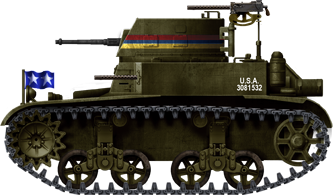
M1 Combat Car, 1st Armoured Division, Fort Benning, Georgia, 1938. The M1 entered service in 1937. Notice the exercise unit colors, painted on the turret. The two extra sponson machine-guns were rarely mounted.
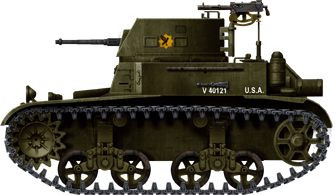
M1 Combat Car at Fort Raily, Kansas, 1940. The M1 and its derivatives never left the American soil. They were kept for training and drilling exercises.
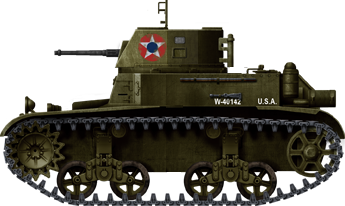
M1A1 light tank of an unidentified training unit, 1941. This variant (17 built in 1937) received a new octagonal turret. The hull was 40 cm longer (to 4.44 m - 17 ft 7 in) and the two bogies were farther apart. The next M1A1E1 (7 produced) received a new Guiberson diesel engine. They led to the development of the M2 light tank.
M1 Combat Car gallery

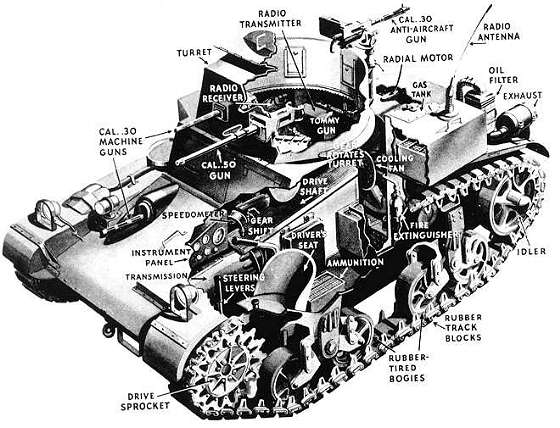
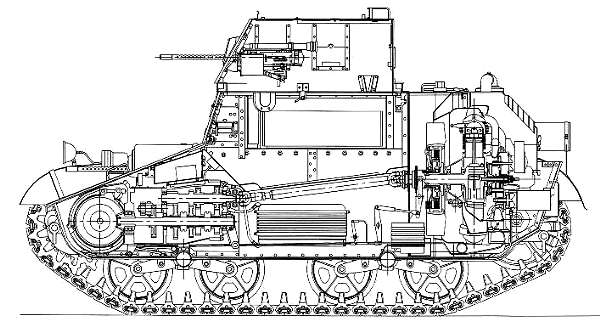

WW2 Tanks




























WW2 tanks posters

All Tiger tanks liveries.

Panther liveries and variants

WW2 Armour - All tanks











Tanks aces and single tanks series

Find more there

Museums, Movies, Books & Games
The Tanks and Armor in pop culture
Tanks and armored vehicles in general are only really grasped when seen first person: The mass, the scale, it's all there. Explore also the way tanks were covered in the movie industry, in books and in video games.Movies:
Best tanks movie on warhistoryonline.com
On imdb.com
On bestsimilar.com/
miltours.com
liveabout.com/
watchmojo.com
Video Games:
pcgamesn.com
historyhit.com
levvvel.com
vg247.com/best-tank-games
mmobomb.com/
alienwarearena.com

